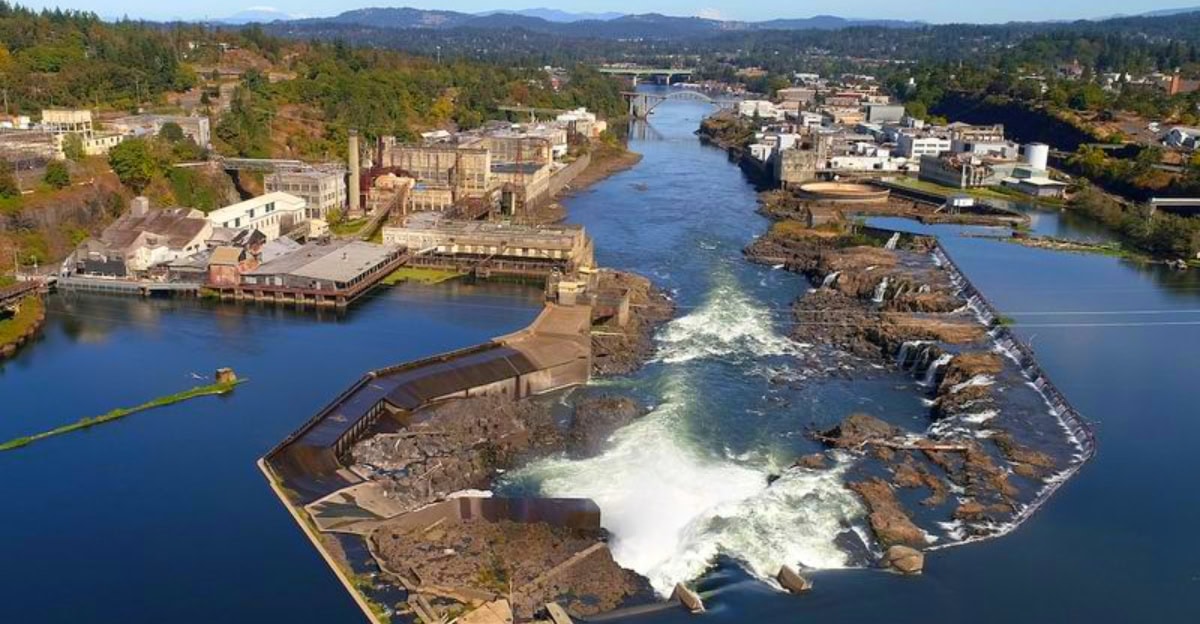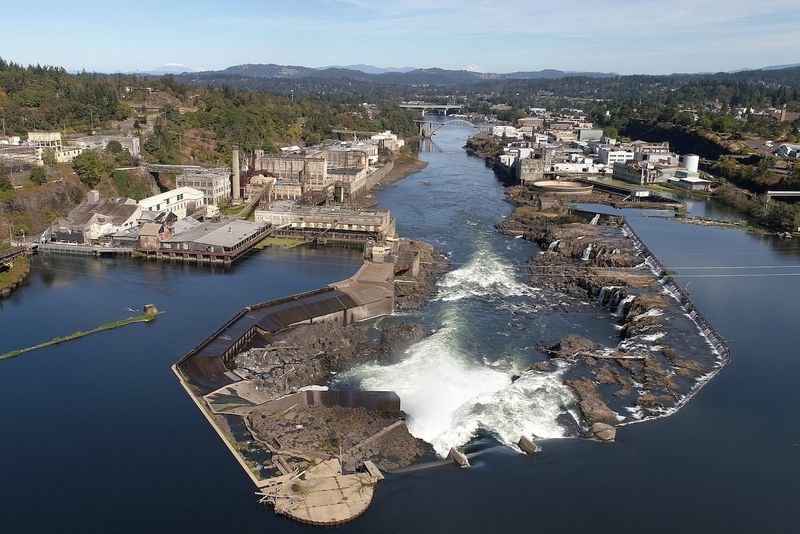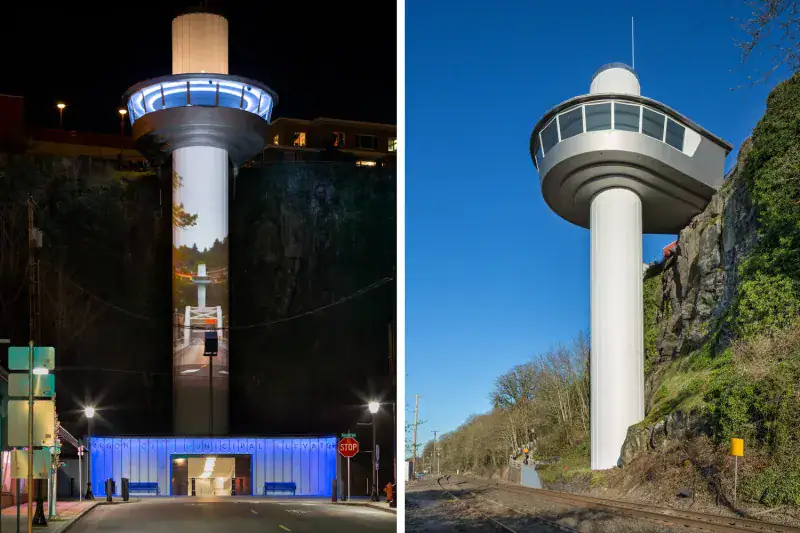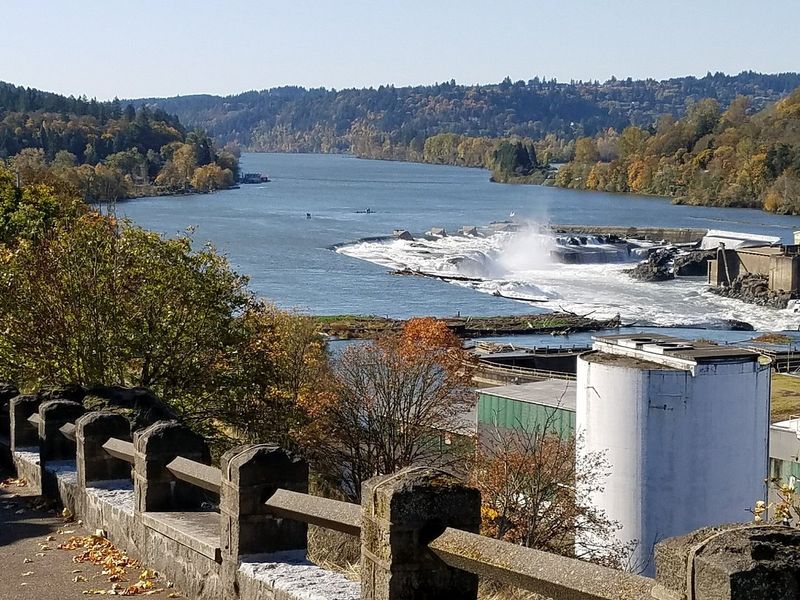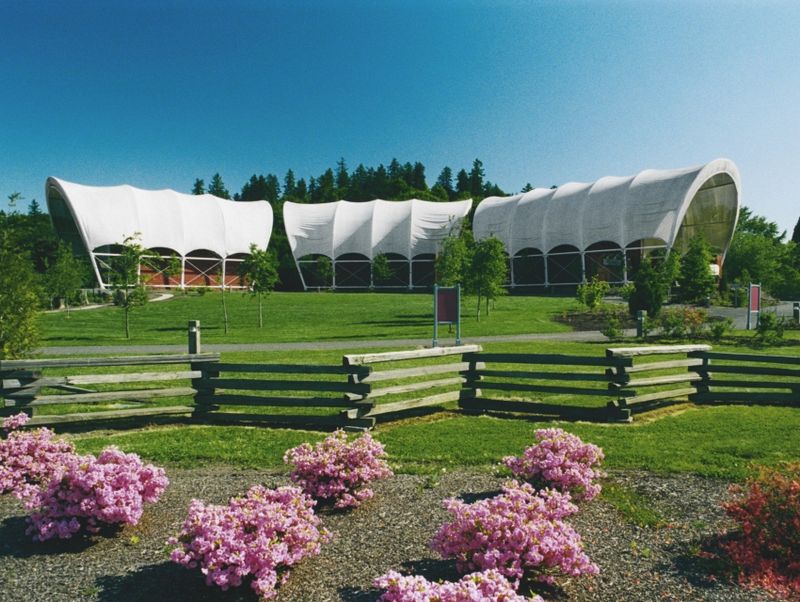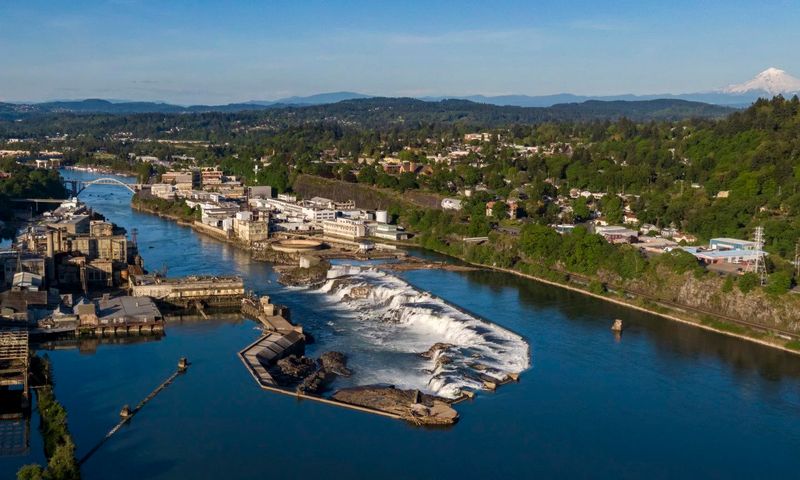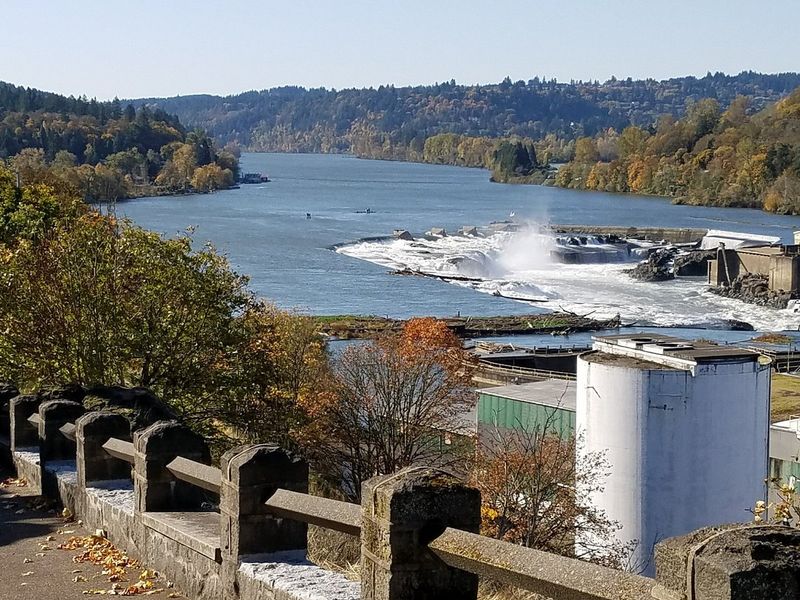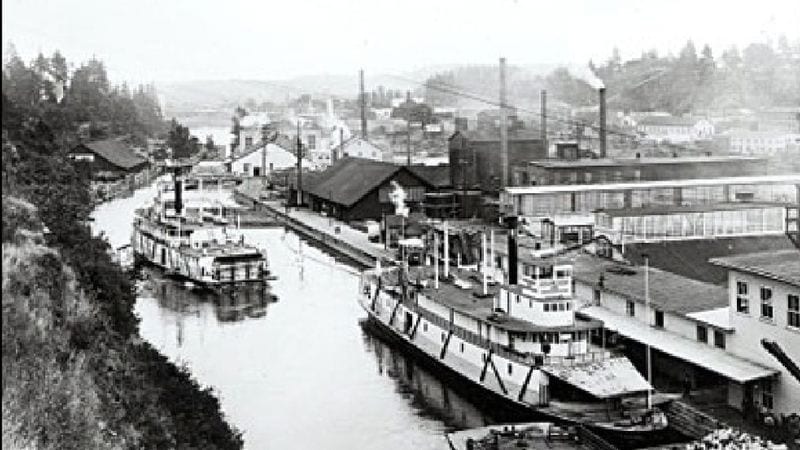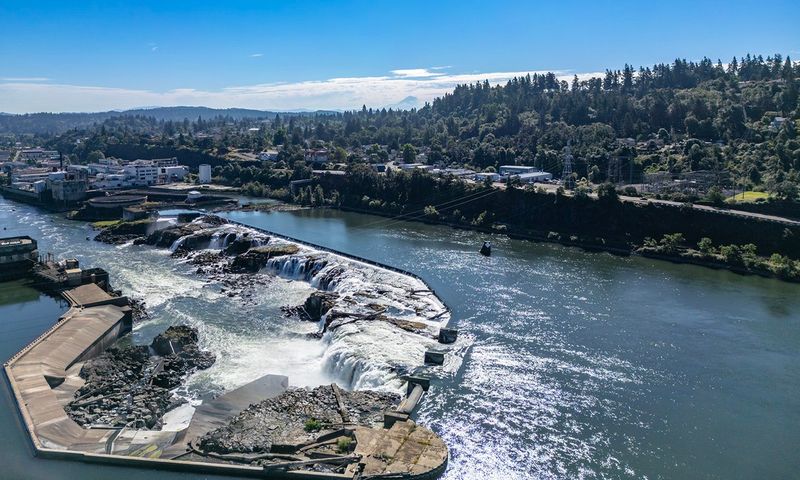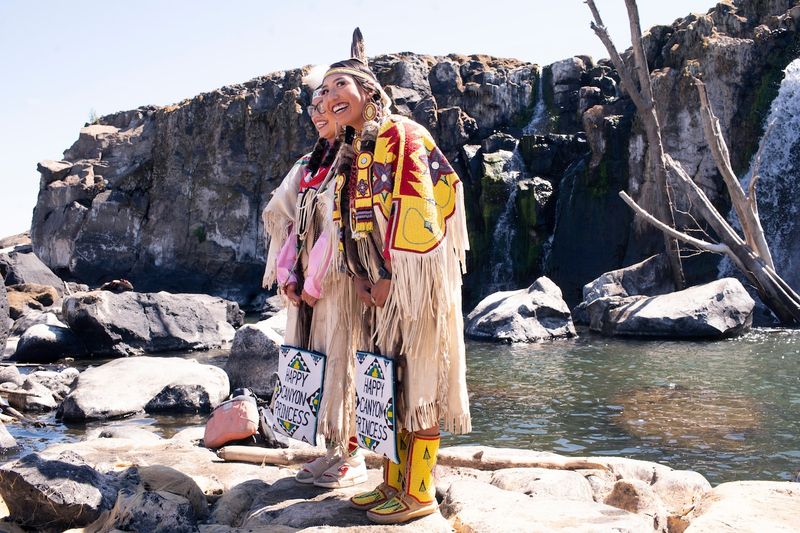Tucked between Portland and Clackamas lies Oregon City, a historic gem with an extraordinary feature—Willamette Falls thunders right through its downtown. This powerful cascade, the largest waterfall by volume in the Pacific Northwest, has shaped the city’s identity since its founding. The rumble of 30,000 cubic feet of water per second creates a backdrop to daily life that few American towns can claim.
Waterfall at the Heart of History
Standing at the edge of downtown Oregon City, Willamette Falls commands attention with its horseshoe shape spanning 1,500 feet across the river. Long before European settlers arrived, Native Americans gathered here for thousands of years, particularly during salmon runs when fish leaped up the cascading waters.
When pioneers established Oregon City in 1842, they recognized the falls’ potential immediately. As the first incorporated city west of the Rocky Mountains, the settlement grew around this natural power source. Mills sprung up along its edges, harnessing the tremendous energy to process lumber and grind wheat.
The falls became the economic engine that built Oregon’s earliest industries, transforming a frontier outpost into a thriving community. Today, you can still spot remnants of those original mill buildings clinging to the basalt cliffs.
Municipal Elevator: Vertical Street with a View
Rising 130 feet through solid basalt, Oregon City’s Municipal Elevator stands as the only outdoor municipal elevator in North America. This isn’t just a quirky transportation option—it’s officially designated as a vertical street in the city’s grid!
Built in 1915 to connect the two levels of town, the current Art Deco tower dates from 1955 and has become an iconic landmark. Step inside the glass-walled observation deck at the top for breathtaking panoramic views of Willamette Falls and the river valley below.
Best of all? The elevator is completely free to ride. Locals use it daily to commute between the bluff and downtown, while visitors snap photos from what might be the most unique vantage point in the entire state of Oregon.
McLoughlin Promenade’s Spectacular Overlooks
Stretching along the bluff above downtown, the McLoughlin Promenade offers the most jaw-dropping views of Willamette Falls you’ll find anywhere. This historic walkway, built as a Works Progress Administration project during the Great Depression, follows the edge of the cliff for nearly half a mile.
Stone walls and vintage lampposts line the path, creating perfect frames for your waterfall photos. Several viewing platforms jut out from the promenade, allowing visitors to lean against the railing and feel the mist rising from the thundering falls below.
During spring runoff, the roar of water is so powerful you’ll feel it in your chest. Come at sunset when the fading light turns the cascading water into ribbons of gold and pink, creating a magical atmosphere that captures the essence of Oregon City.
End of the Oregon Trail Experience
Just minutes from downtown’s waterfall, three massive wagon-shaped buildings house the End of the Oregon Trail Interpretive Center. This museum marks the final destination of America’s most famous pioneer route, where thousands of settlers completed their 2,000-mile journey—drawn partly by stories of the powerful falls.
Interactive exhibits let you pack a virtual wagon, try on pioneer clothing, and experience the hardships faced by travelers. Kids love making candles and grinding wheat using traditional methods, connecting them to the city’s earliest days.
Many pioneers who reached Oregon City settled near the falls, harnessing its power for new businesses. The museum brings these stories to life, showing how the waterfall’s energy transformed a wilderness outpost into the first American city west of the Rockies.
Willamette Falls Heritage Area
Surrounding the mighty cascade, the Willamette Falls Heritage Area preserves the fascinating industrial history that grew alongside the water. Once home to paper mills, wool processing facilities, and one of America’s earliest hydroelectric plants, this area tells the story of innovation powered by nature.
In 1889, engineers accomplished something revolutionary here—they transmitted electricity generated by the falls to Portland, 14 miles away. This marked the first long-distance commercial power transmission in the United States, predating even Niagara Falls’ similar achievement.
Today, restoration efforts are transforming abandoned industrial buildings into public spaces while honoring their heritage. The ambitious Willamette Falls Riverwalk project aims to provide public access to areas long closed to visitors, creating walking paths that will lead right to the base of the thundering falls.
Downtown’s Waterfall-Powered Economy
Main Street in Oregon City buzzes with energy that mirrors the nearby falls, with locally-owned shops and restaurants thriving in historic buildings. Boutiques selling handcrafted goods sit beside cafés where the sound of rushing water provides natural ambiance through open windows.
The falls don’t just create atmosphere—they’ve shaped the local economy for generations. Today’s businesses honor this connection through names like Falls Brewing Company and Willamette Mercantile, while serving specialties like “Thundering Falls” coffee blends and waterfall-inspired artwork.
Weekend markets bring artisans to downtown plazas where they sell goods within view of the cascade. Unlike towns that turned their backs on industrial areas, Oregon City embraces its waterfall-centered identity, creating a uniquely authentic downtown experience where natural wonder and community commerce blend seamlessly.
Fishing in the Shadow of the Falls
Anglers flock to Oregon City for a fishing experience unlike any other—casting lines within sight of a roaring waterfall. The churning waters below Willamette Falls create perfect habitat for multiple fish species, including Chinook salmon, steelhead, and sturgeon.
From spring through fall, fishing platforms near the falls fill with hopeful fishermen seeking the day’s catch. Some of the Pacific Northwest’s largest white sturgeon, prehistoric-looking fish that can reach lengths over ten feet, lurk in the deep pools beneath the cascade.
For centuries, Native Americans constructed elaborate wooden platforms here for salmon fishing. Today, interpretive signs along the riverbank explain these traditional fishing methods while you try your luck. Even if you don’t catch anything, watching osprey dive for fish while spray from the falls cools your face makes for an unforgettable outdoor adventure.
Locks, Canals and River History
Before modern highways, the Willamette River served as Oregon’s main transportation route, but Willamette Falls created a major obstacle. The solution? An engineering marvel built in 1873—the Willamette Falls Locks, the first multi-chambered canal and lock system in the United States.
These historic locks allowed boats to navigate around the 40-foot waterfall, creating a crucial shipping link between Portland and the Willamette Valley. Steamboats loaded with agricultural products, lumber, and passengers once lined up to pass through the ingenious system.
Though temporarily closed for repairs, the locks remain a fascinating piece of living history. Walking tours along the canal walls reveal massive gates and mechanical systems that haven’t changed much in 150 years. Plans are underway to reopen this National Register of Historic Places site, reconnecting Oregonians with their river heritage.
Waterfall Mist and Microbreweries
When afternoon sun hits Willamette Falls just right, rainbows dance through the mist—providing the perfect backdrop for Oregon City’s thriving craft beverage scene. Local brewers capture this magic by creating taprooms with waterfall views and brewing beers inspired by the cascade’s power.
Coin Toss Brewing pays homage to the city’s founding story (Portland and Oregon City’s founders literally flipped a coin to name Portland). Their riverside patio offers views of the falls while you sample “Falls Frenzy IPA” or “Cascadian Dark Ale.”
Oregon City Brewing Company transformed a historic building into a community gathering spot where 44 taps pour local creations alongside guest brews. Their “Elevator IPA” references the municipal elevator, while seasonal “Thundering Falls” varieties change with the waterfall’s flow. After a day exploring downtown, nothing beats sipping a cold craft beer while watching the sun set behind the misty cascade.
Festivals Celebrating the Falls
The roar of Willamette Falls provides the soundtrack for Oregon City’s vibrant festival scene. Each August, the Willamette Falls Festival draws thousands to celebrate the natural wonder with live music stages positioned to showcase the cascade as a dramatic backdrop.
During the annual Heritage Days celebration, historical reenactors demonstrate how early settlers harnessed the falls’ power. Visitors can try their hand at traditional crafts while learning about the waterfall’s crucial role in powering Oregon’s early economy.
The First City Celebration transforms downtown into a street fair where local artists display waterfall-inspired creations. Food vendors serve salmon prepared using traditional Native American methods, honoring the indigenous peoples who first gathered at the falls. These community gatherings connect modern residents with the natural force that has drawn people to this spot for thousands of years.
